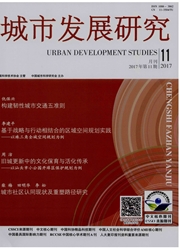

 中文摘要:
中文摘要:
全球城市是世界城市化进程的新趋势,然而在以金融业发端的全球经济危机中,早已完成服务转型的全球城市受冲击却最为显著.为了给我国正在崛起的全球城市产业结构调整提供经验,采用案例研究的方式,比较纽约、伦敦、东京三大全球城市以及上海制造业企业不同环节的空间布局.三大全球城市虽然以服务业为主,但并未完全放弃制造业,只是在门类上向都市型工业转型;纽约和伦敦主要保留制造业企业的服务环节,而东京拥有部分制造环节;不同价值环节的部门在空间布局上符合市场经济规律,即总部、信息部门等位于城市中心,而制造环节向边缘地带甚至其他城市转移.我国崛起中的全球城市在发展服务业的同时,也要充分考虑制造业在城市经济中的地位,在门类和空间布局上以市场为导向,发展都市型工业和制造业总部等服务部门,并促进企业布局走向区域一体化,使城市更具竞争力.
 英文摘要:
英文摘要:
The emergence of global cities is the new trend of urbanization, however, in the financial crisis, these global cities which are already reformed to the service industry suffered most. To provide experience for the emerging global cities, the author describes the locations of manufacturing enterprises' departments in New York, London and Tokyo. It turns out that the global cities have not fully given up manufacturing industries. In the studied cases, they mainly develop the urban industries however. The main departments of manufacturing enterprises in New York and London are service departments, while Tokyo keeps more manufacturing parts in the metropolis. Different departments of manufacturing industries have different choices of location, just in line with the land bid-rent curves. Service departments and headquarters locate near the center of the cities; manufacturing departments are in the edge of metropolises and even in other cities. The role of manufacture in the development of the rising global cities should be taken into consideration. As adjusting industrial structure, the emerging global cities as Shanghai should balance the development of advanced service industry and manufacturing industry. The choice of manufacture category and location should be market-oriented. The cities can keep headquarters and service department of manufacture, thus promoting regional integration and enhancing competitiveness.
 同期刊论文项目
同期刊论文项目
 同项目期刊论文
同项目期刊论文
 期刊信息
期刊信息
